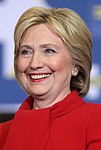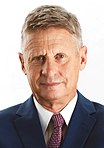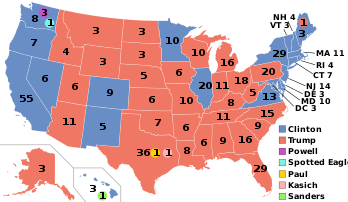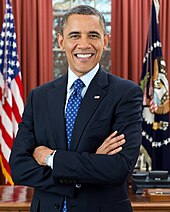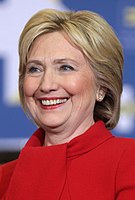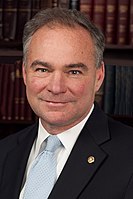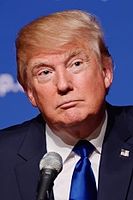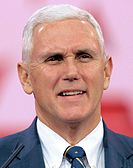Grrrrrrrr -eetings . here is a fun and fantastic addition to your costume gear, or the perfect gift for any fan.
this is a Credit Card Size rendition of an official identification card.
It is approximately in Size: 3.25 in. x 2.75 in. It is constructed of laminated plastic.
Thanks most kindly, Harry
United States presidential election, 2016
|
|||||||||||||||||||||||||||||||||||||||||||||||||||||||
|
|||||||||||||||||||||||||||||||||||||||||||||||||||||||
|
|
|||||||||||||||||||||||||||||||||||||||||||||||||||||||
| The electoral map for the 2016 election, based on apportionment following the 2010 census | |||||||||||||||||||||||||||||||||||||||||||||||||||||||
|
|||||||||||||||||||||||||||||||||||||||||||||||||||||||
2016 U.S. presidential election |
|---|
| Democratic Party |
| Republican Party |
| Third parties |
The United States presidential election of 2016, scheduled for Tuesday, November 8, 2016, will be the 58th quadrennial U.S. presidential election.
Voters will select presidential electors, who in turn will vote for a new president and vice president through the Electoral College. The term limit established in the Twenty-second Amendment to the United States Constitution prevents the incumbent president, Barack Obama of the Democratic Party, from being elected to a third term. The 2016 election will likely determine the 45th President and 48th Vice President of the United States.
The series of presidential primary elections and caucuses took place between February 1 and June 14, 2016, staggered among the 50 states, the District of Columbia and U.S. territories. This nominating process is also an indirect election, where voters cast ballots for a slate of delegates to a political party's nominating convention, who in turn elect their party's presidential nominee. The Republican National Convention took place from July 18–21, 2016, in Cleveland, Ohio, while the Democratic National Convention took place from July 25–28, 2016, in Philadelphia, Pennsylvania.
Businessman and reality television personality Donald Trump became the Republican Party's presidential nominee on July 19, 2016, after defeating Texas Senator Ted Cruz, Ohio Governor John Kasich, Florida Senator Marco Rubio and several other candidates in the Republican primary elections.[1] Former Secretary of State and New York Senator Hillary Clinton became the Democratic Party's presidential nominee on July 26, 2016, after defeating Vermont Senator Bernie Sanders. Clinton is the first female presidential candidate nominated by a major political party. It is also the first election since 1944 in which both major party candidates were from the same home state. In both cases, the two candidates were from New York.
Various third party and independent presidential candidates are also running in the election. Two are on the ballot in enough states to mathematically win the electoral college and have been featured in major national polls: the Libertarian Party nominee, former Governor of New Mexico Gary Johnson, and the Green Party nominee, Jill Stein.[2][3] Johnson and Stein also ran as their parties' presidential nominees in the 2012 election.
Contents
Background
Article Two of the United States Constitution provides that the President and Vice President of the United States must be natural-born citizens of the United States at least 35 years old, and a resident of the United States for a period of at least 14 years. Candidates for the presidency typically seek the nomination of one of the political parties of the United States, in which case each party devises a method (such as a primary election) to choose the candidate the party deems best suited to run for the position. The primary elections are usually indirect elections where voters cast ballots for a slate of party delegates pledged to a particular candidate. The party's delegates then officially nominate a candidate to run on the party's behalf. The general election in November is also an indirect election, where voters cast ballots for a slate of members of the Electoral College; these electors in turn directly elect the President and Vice President.
Obama, a Democrat and former U.S. Senator from Illinois, is ineligible to seek reelection to a third term due to restrictions of the Twenty-second Amendment; in accordance with Section I of the Twentieth Amendment, his term expires at 12:00 noon EST on January 20, 2017.
2008 presidential election
In the 2008 election, Obama was elected president, defeating the Republican nominee, Senator John McCain of Arizona, with 53% of the popular vote and 68% of the electoral vote,[4][5] succeeding two-term Republican President George W. Bush, the former Governor of Texas. Since the end of 2009, Obama's first year in office, polling companies such as Gallup have found Obama's approval ratings to be between 40–50%.[6][7] Analysts such as Larry Sabato have noted that Obama's approval ratings could impact the 2016 campaign, having either a positive or negative effect on Clinton's campaign.[8][9]
2010 midterm elections
In the 2010 midterm elections, the Democratic Party suffered significant losses in Congress; the Republicans gained 63 seats in the House of Representatives – taking back control of the chamber in the process – and six seats in the Senate, though short of achieving a majority. As a result of the Republicans' recapture of the House after losing it to the Democrats in the 2006 midterm elections, John Boehner became the 53rd Speaker of the House of Representatives, making Obama the first President in 16 years to lose the House of Representatives in the first half of his first term in an election that was characterized by the economy's slow recovery, and the rise of the Tea Party movement.[10]
2012 presidential election
In the 2012 presidential election, Obama defeated former Governor of Massachusetts Mitt Romney with 51% of the popular vote and 62% of the electoral vote.[11] Meanwhile, despite minor losses, Republicans retained their majority of seats in the House of Representatives while Democrats increased their majority in the Senate.[5]
Speculation about the 2016 campaign began almost immediately following the 2012 campaign, with New York magazine declaring the race had begun in an article published on November 8, two days after the 2012 election.[12] On the same day, Politico released an article predicting the 2016 general election may be between Clinton and former Governor of Florida Jeb Bush, while a New York Times article named Governor of New Jersey Chris Christie and New Jersey Senator Cory Booker as potential candidates.[13][14]
2014 midterm elections
In the 2014 midterm elections, voter turnout was the lowest since 1942: 36% of eligible voters voted.[15] The Republicans retained control of the House of Representatives, increasing their majority to its largest since March 4, 1929,[16] and gained a majority in the Senate.[17]
Democratic Party
|
||
|---|---|---|
|
Secretary of State U.S. Senator from New York First Lady of the United States First Lady of Arkansas |
||
Former Secretary of State Hillary Clinton, who also served in the U.S. Senate and was the First Lady of the United States, became the first Democrat to announce a major candidacy for the presidency. Clinton made the announcement on April 12, 2015, via a video message.[18] While Nationwide opinion polls in 2015 indicated that Clinton was the front-runner for the 2016 Democratic presidential nomination, she faced challenges from Independent Vermont Senator Bernie Sanders,[19] who became the second candidate when he made a formal announcement on April 30, 2015, that he was running for the Democratic nomination.[20] September 2015 polling numbers indicated a narrowing gap between Clinton and Sanders.[19][21][22] On May 30, 2015, former Governor of Maryland Martin O'Malley was the third candidate to enter the race.[23] On June 3, 2015, Lincoln Chafee, former Independent Governor and Republican Senator of Rhode Island, became the fourth Democrat to announce his candidacy.[24][25] On July 2, 2015, former Virginia Senator Jim Webb became the fifth Democrat to announce his candidacy.[26] On September 6, 2015, former Harvard law professor Lawrence Lessig became the sixth and final Democrat to announce his candidacy.[27]
On October 20, 2015, Webb announced his withdrawal from the Democratic primaries, and explored a potential Independent run.[28] The next day Vice-President Joe Biden decided not to run, ending months of speculation, stating, "While I will not be a candidate, I will not be silent."[29][30] On October 23, Chafee withdrew, stating that he hoped for "an end to the endless wars and the beginning of a new era for the United States and humanity."[31] On November 2, after failing to qualify for the second DNC-sanctioned debate after adoption of a rule change negated polls which before might have necessitated his inclusion in the debate, Lessig withdrew as well, narrowing the field to Clinton, O'Malley, and Sanders.[32]
On February 1, 2016, in an extremely close contest, Clinton won the Iowa caucuses by a margin of 0.2% over Sanders. After winning no delegates in Iowa, O'Malley withdrew from the presidential race that day. On February 9, Sanders bounced back to win the New Hampshire primary with 60% of the vote. In the remaining two February contests, Clinton won the Nevada caucuses with 53% of the vote and scored a decisive victory in the South Carolina primary with 73% of the vote.[33][34] On March 1, 11 states participated in the first of four "Super Tuesday" primaries. Clinton won Alabama, Arkansas, Georgia, Massachusetts, Tennessee, Texas, and Virginia and 504 pledged delegates, while Sanders won Colorado, Minnesota, Oklahoma and his home state of Vermont and 340 delegates. The following weekend, Sanders won victories in Kansas, Nebraska and Maine with 15- to 30-point margins, while Clinton won the Louisiana primary with 71% of the vote. On March 8, despite never having a lead in the Michigan primary, Sanders won by a small margin of 1.5% and outperforming polls by over 19 points, while Clinton won 83% of the vote in Mississippi.[35] On March 15, the second of four "Super Tuesday" primaries, Clinton won in Florida, Illinois, Missouri, North Carolina and Ohio. Between March 22 and April 9, 2016, Sanders won six caucuses in Idaho, Utah, Alaska, Hawaii, Washington and Wyoming, as well as the Wisconsin primary, while Clinton won the Arizona primary. On April 19, Clinton won the New York primary with 58% of the vote. On April 26, in the third of four "Super Tuesday" primaries dubbed the "Acela primary," she won contests in Connecticut, Delaware, Maryland and Pennsylvania, while Sanders won in Rhode Island. Over the course of May, Sanders pulled off another surprise win in the Indiana primary[36] and also won in West Virginia and Oregon, while Clinton won the Guam caucus and Kentucky primary.
On June 4 and 5, Clinton won two victories in the Virgin Islands caucus and Puerto Rico primary. On June 6, 2016, the Associated Press and NBC News reported that Clinton had become the presumptive nominee after reaching the required number of delegates, including pledged delegates and superdelegates, to secure the nomination, becoming the first woman to ever clinch the presidential nomination of a major United States political party.[37] On June 7, Clinton secured a majority of pledged delegates after winning primaries in California, New Jersey, New Mexico and South Dakota, while Sanders only won in Montana and North Dakota. Clinton also won the final primary in Washington, D.C. on June 14. At the conclusion of the primary process, Clinton had won 2,204 pledged delegates (54% of the total) awarded by the primary elections and caucuses, while Sanders had won 1,847 (46%). Out of the 714 unpledged delegates or "superdelegates" who were set to vote in the convention in July, Clinton received endorsements from 560 (78%), while Sanders received 47 (7%).[38]
Although Sanders had not formally dropped out of the race, he announced on June 16, 2016, that his main goal in the coming months would be to work with Clinton to defeat Trump in the general election.[39] On July 8, appointees from the Clinton campaign, the Sanders campaign, and the Democratic National Committee negotiated a draft of the party's platform.[40] On July 12, Sanders formally endorsed Clinton at a rally in New Hampshire in which he appeared with Clinton.[41] On July 22, three days before the start of the Democratic National Convention, the Clinton campaign announced that Virginia Senator Tim Kaine had been selected as her running mate.
Primaries
Nominees
| Democratic Party ticket, 2016 | |||||||||||||||||||||||||||||
| Hillary Clinton | Tim Kaine | ||||||||||||||||||||||||||||
|---|---|---|---|---|---|---|---|---|---|---|---|---|---|---|---|---|---|---|---|---|---|---|---|---|---|---|---|---|---|
| for President | for Vice President | ||||||||||||||||||||||||||||
| 67th U.S. Secretary of State (2009–2013) |
U.S. Senator from Virginia (2013–present) |
||||||||||||||||||||||||||||
| Campaign | |||||||||||||||||||||||||||||
| [42][43][44] | |||||||||||||||||||||||||||||
Other major candidates
The following candidates were frequently interviewed by major broadcast networks and cable news channels, and were listed in publicly published national polls. Lessig was invited to one forum, but withdrew when rules were changed which prevented him from participating in officially sanctioned debates.
Clinton received 16,849,779 votes in the primary.
| Candidates in this section are sorted by date of withdrawal from the primaries | |||||||
| Bernie Sanders | Martin O'Malley | Lawrence Lessig | Lincoln Chafee | Jim Webb | |||
|---|---|---|---|---|---|---|---|
|
|
Governor of Maryland (2007–2015) |
(2009–2016) |
Governor of Rhode Island (2011–2015) |
from Virginia (2007–2013) |
|||
|
|
|
|
|
|
|||
|
13,167,848 primary votes and 1,846 delegates |
110,423 votes |
4 write-in votes in New Hampshire |
0 votes |
2 write-in votes in New Hampshire |
|||
|
|
|
|
|
|
|||
Vice presidential selection
|
|
It has been suggested that Democratic Party vice presidential candidate selection, 2016 be merged into this section. (Discuss) Proposed since August 2016. |
In April 2016, the Clinton campaign began to put together a list of 15 to 20 individuals to vet for the position of running mate, even though Sanders continued to challenge Clinton in the Democratic primaries.[50] In mid-June, the The Wall Street Journal reported that Clinton's shortlist included Representative Xavier Becerra of California, Senator Cory Booker of New Jersey, Senator Sherrod Brown of Ohio, Housing and Urban Development Secretary Julián Castro of Texas, Mayor of Los Angeles Eric Garcetti of California, Senator Tim Kaine of Virginia, Labor Secretary Tom Perez of Maryland, Representative Tim Ryan of Ohio, and Senator Elizabeth Warren of Massachusetts.[51] Subsequent reports stated that Clinton was also considering Secretary of Agriculture Tom Vilsack, retired Admiral James Stavridis, and Governor John Hickenlooper of Colorado.[52] In discussing her potential vice presidential choice, Clinton stated that the most important attribute she looked for was the ability and experience to immediately step into the role of president.[52]
On July 22, Clinton announced that she had chosen Senator Tim Kaine of Virginia as her running mate.[53] The delegates at the 2016 Democratic National Convention, which took place July 25–28, formally nominated the Democratic ticket.
Republican Party
|
||
|---|---|---|
|
The Trump Organization  |
||
Seventeen major candidates entered the race starting March 23, 2015, when Senator Ted Cruz of Texas was the first to announce his candidacy: former Governor Jeb Bush of Florida, retired neurosurgeon Ben Carson of Maryland, Governor Chris Christie of New Jersey, businesswoman Carly Fiorina of California, former Governor Jim Gilmore of Virginia, Senator Lindsey Graham of South Carolina, former Governor Mike Huckabee of Arkansas, former Governor Bobby Jindal of Louisiana, Governor John Kasich of Ohio, former Governor George Pataki of New York, Senator Rand Paul of Kentucky, former Governor Rick Perry of Texas, Senator Marco Rubio of Florida, former Senator Rick Santorum of Pennsylvania, businessman Donald Trump of New York and Governor Scott Walker of Wisconsin. This was the largest presidential primary field for any political party in American history.[54]
Prior to the Iowa caucuses on February 1, 2016, Perry, Walker, Jindal, Graham and Pataki withdrew due to low polling numbers. Despite leading many polls in Iowa, Trump came in second to Cruz, after which Huckabee, Paul and Santorum withdrew due to poor performances at the ballot box. Following a sizable victory for Trump in the New Hampshire primary, Christie, Fiorina and Gilmore abandoned the race. Bush followed suit after scoring fourth place to Trump, Rubio and Cruz in South Carolina. On March 1, 2016, the first of four "Super Tuesday" primaries, Rubio won his first contest in Minnesota, Cruz won Alaska, Oklahoma and his home of Texas and Trump won the other seven states that voted. Failing to gain traction, Carson suspended his campaign a few days later.[55] On March 15, 2016, the second of four "Super Tuesday" primaries, Kasich won his only contest in his home state of Ohio and Trump won five primaries including Florida. Rubio suspended his campaign after losing his home state,[56] but retained a large share of his delegates for the national convention, which he released to Trump.[56]
Between March 16 and May 3, 2016, only three candidates remained in the race: Trump, Cruz and Kasich. Cruz won most delegates in four Western contests and in Wisconsin, keeping a credible path to denying Trump the nomination on first ballot with 1,237 delegates. However, Trump scored landslide victories in New York and five Northeastern states in April and he grabbed all 57 delegates in the Indiana primary of May 3, 2016. Without any further chances of forcing a contested convention, both Cruz[57] and Kasich[58] suspended their campaigns. Trump remained the only active candidate and was declared the presumptive Republican nominee by Republican National Committee chairman Reince Priebus on the evening of May 3, 2016.[59]
Primaries
Nominees
| Republican Party ticket, 2016 | |||||||||||||||||||||||||||||
| Donald Trump | Mike Pence | ||||||||||||||||||||||||||||
|---|---|---|---|---|---|---|---|---|---|---|---|---|---|---|---|---|---|---|---|---|---|---|---|---|---|---|---|---|---|
| for President | for Vice President | ||||||||||||||||||||||||||||
| Chairman of The Trump Organization (1971–present) |
50th Governor of Indiana (2013–present) |
||||||||||||||||||||||||||||
| Campaign | |||||||||||||||||||||||||||||
| [60][61][62] | |||||||||||||||||||||||||||||
Other major candidates
Major candidates were determined by the various media based on common consensus. The following were invited to sanctioned televised debates based on their poll ratings.
Trump received 14,010,177 total votes in the primary. He, Cruz, Rubio and Kasich each won at least one primary.
| Candidates in this section are sorted by date of withdrawal from the primaries | |||||||
| John Kasich | Ted Cruz | Marco Rubio | Ben Carson | Jeb Bush | Jim Gilmore | Carly Fiorina | Chris Christie |
|---|---|---|---|---|---|---|---|
|
Governor of Ohio (2011–present) |
from Texas (2013–present) |
from Florida (2011–present) |
Johns Hopkins Hospital (1984–2013) |
Governor of Florida (1999–2007) |
Governor of Virginia (1998–2002) |
(1999–2005) |
Governor of New Jersey (2010–present) |
|
|
|
|
|
|
|
|
|
|
4,287,479 votes |
7,811,110 votes |
3,514,124 votes |
857,009 votes |
286,634 votes |
18,364 votes |
40,577 votes |
57,634 votes |
|
|
|
|
|
|
|
|
|
| Rand Paul | Rick Santorum | Mike Huckabee | George Pataki | Lindsey Graham | Bobby Jindal | Scott Walker | Rick Perry |
|
from Kentucky (2011–present) |
from Pennsylvania (1995–2007) |
Governor of Arkansas (1996–2007) |
Governor of New York (1995–2006) |
from South Carolina (2003–present) |
Governor of Louisiana (2008–2016) |
Governor of Wisconsin (2011–present) |
Governor of Texas (2000–2015) |
|
|
|
|
|
|
|
|
|
|
66,781 votes |
16,622 votes |
51,436 votes |
2,036 votes |
5,666 votes |
222 votes |
0 votes |
0 votes |
|
|
|
|
|
|
|
|
|
